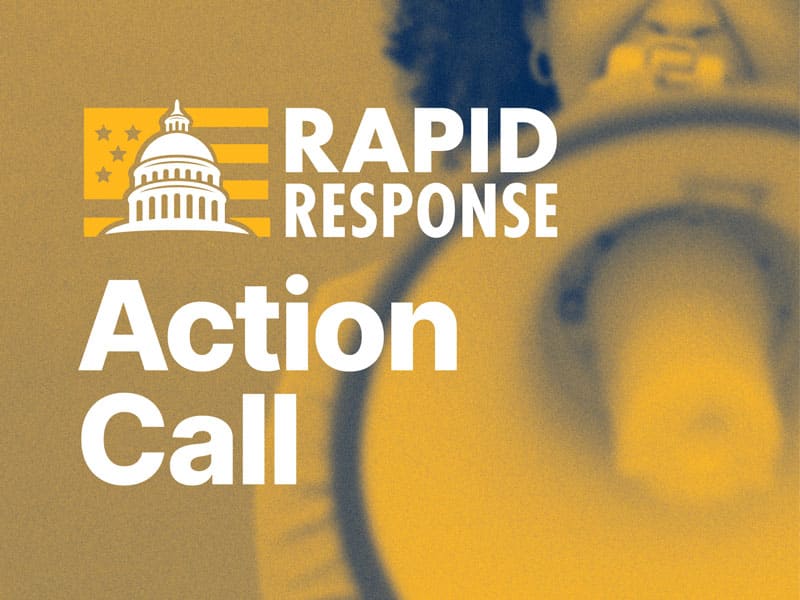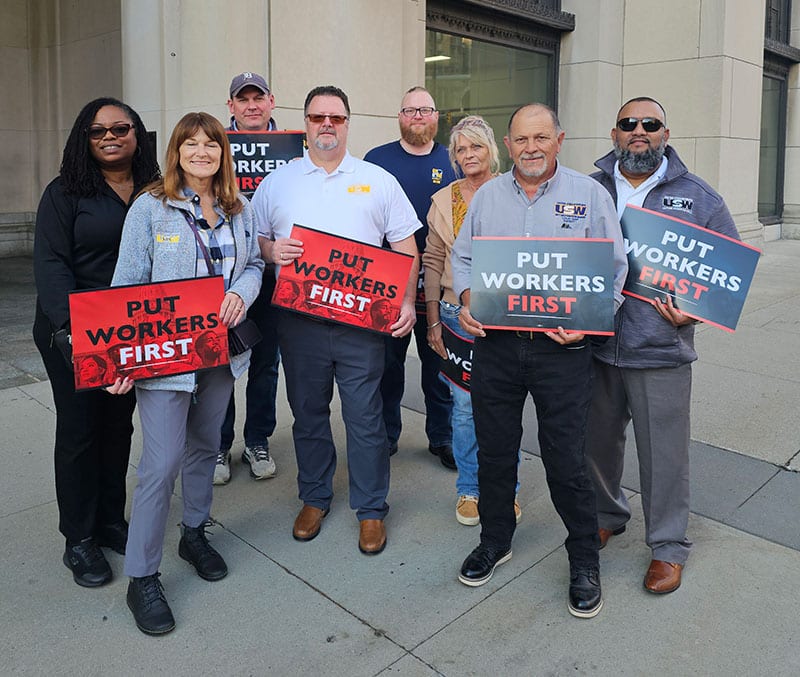Health Care Workers Build Power: Union Members Who Were on the Front Lines of COVID are Still Fighting for a Better System

Three years ago, registered nurse and USW member Judy Danella’s feelings ranged from sadness to worry to disbelief as the COVID-19 crisis gripped the nation.
The president of Local 4-200 at Robert Wood Johnson University Hospital in New Brunswick, N.J., was shocked to see so many people, young and old, suffering and dying each day. As a health care worker, she wondered who among her union siblings might be the next to fall ill.
“COVID came so quickly, and we were not prepared,” Danella said. “There was a feeling of sadness that so many nurses left the nursing profession and felt they were giving up a career they loved.”
Worst Days of Pandemic
That summer of 2020, the United States was suffering through some of the worst days of the pandemic. Infections in the U.S. passed 2 million, deaths from the virus reached the heartbreaking 100,000 mark, vaccines were still months away, and tens of millions of Americans were under stay-at-home orders.
Those orders were intended to help protect front-line workers by slowing the spread of the virus. Still, for Danella and the thousands of other USW members in health care jobs, daily life was punishing, with ever-longer hours, overcrowded facilities, equipment shortages, fears of infection, and the lasting psychological distress of witnessing the effects of the deadly disease first-hand.
At Robert Wood Johnson, Local 4-200 members made sure to use their union solidarity the best they could to combat the virus. They fought to ensure they had the necessary personal protective equipment (PPE), and that no members lost their jobs as a result of the crisis.
“The union was instrumental in keeping our members employed,” Danella said. “We fought hard to make sure PPE was distributed to nurses across all floors.”
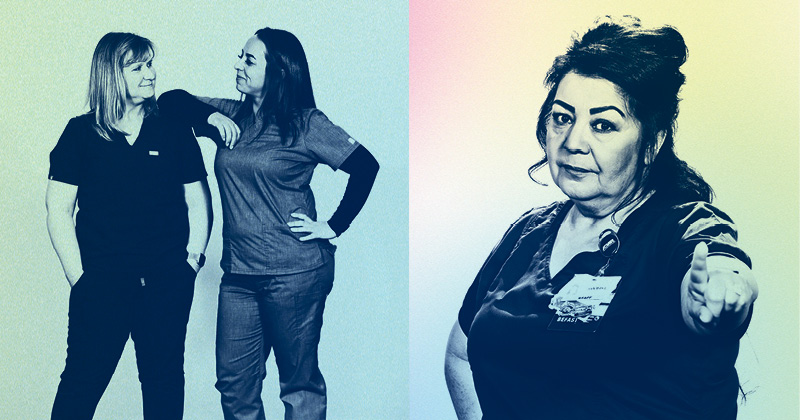
A New Understanding
The crisis also led Americans to a better understanding of how important front-line health care workers are to the nation’s collective well-being.
“People realize, in general, now how important the health care community is,” said Alyssa Stout, an X-ray technologist at Northern California’s Oroville Hospital and president of Local 9600, as she recalled how she and her co-workers helped each other through the crisis. “I feel we have more leverage now than we ever did before, because people realize we’re needed.”
Today, Daniella, Stout, and thousands of other USW members who put themselves on the line during the pandemic are continuing to harness that leverage to fight for a better system, stronger contract language, and improved care for their patients.
Stout and her 800 co-workers banded together to keep Oroville Hospital operating through the pandemic, working around the clock to save lives. Later, they brought that same strength to the bargaining table, winning a new contract with safety enhancements and other provisions that left Local 9600 members, the hospital and their community stronger than before.
As the pandemic worsened, Danella and her co-workers reached out to government officials to make sure they could access enough PPE to protect themselves and their patients. And, in the midst of the crisis, they bargained a new agreement that provided significant wage increases, public health emergency language, and other vital benefits.

Strength in Numbers
The crisis gave union workers in health care and other essential workplaces a new sense of their collective strength.
“We need to be prepared and remember that we have faced obstacles and have survived,” Danella said. “If all union members stood together, imagine the power in the country we would have.”
One of the many common issues USW health care workers face is the need to achieve safe staffing levels to protect patients on a daily basis and prevent the health care system from becoming overburdened as it was during the worst days of the pandemic.
“You prioritize your work,” Danella said as she explained how she approaches the constant stream of alerts she receives about the additional tasks assigned to her throughout her shifts. “You just somehow get through the day, and you manage.”
Danella and other health care workers rallied in May at the New Jersey statehouse, demanding that lawmakers pass legislation establishing minimum staffing levels for registered nurses in hospitals, ambulatory surgery centers and state psychiatric facilities.
“You want to give the patient the best care you can,” said Danella, whose local includes about 1,650 registered nurses at the Robert Wood Johnson facility, a Level 1 trauma center. The local was in difficult negotiations for a new contract as USW@Work went to press. On July 24, the local announced that it notified Robert Wood Johnson that members would begin an unfair labor practice strike the following week.
Also this July, in Duluth, Minn., members of Local 9460 rallied for safe staffing at St. Mary’s Medical Center while they were engaged in tough bargaining with Essentia Health.
The New Jersey legislation would require one registered nurse for every four patients in an emergency department, one for every two patients in intensive care, and one for every five patients in a medical/surgical unit. The bills also would give the nurses a voice in designing and implementing staffing systems that model future needs.
Lawmakers in other states across the country – spurred by union activism among health care workers – are considering similar measures after health care employers for years refused to hire adequate numbers of nurses, certified nursing assistants, dietary workers and other essential staff.
International Vice President Kevin Mapp, who oversees the USW’s 50,000-member health care sector, said that it is important that safe staffing measures include a comprehensive approach to the issue, one that considers not only nurses, but aides, dietary and clerical staff, among other jobs. New York state lawmakers enacted such a law in 2021.
“Staffing is an issue that is important at every level of health care,” Mapp said. “Every worker in a hospital or nursing facility contributes in some way to the facility’s mission of providing quality care.”
The movement for safe staffing reached the Capitol in Washington, D.C., as well. This spring, U.S. Sen. Sherrod Brown of Ohio and U.S. Rep. Jan Schakowsky of Illinois introduced legislation to establish mandatory minimum staffing levels for nurses at hospitals nationwide.
In addition, the Centers for Medicare and Medicaid Services are in the process of finalizing a rule that would establish national minimum staffing levels at nursing homes and other long-term care facilities that receive federal funds. The USW and other health care activists have been pushing to make the final staffing rule as robust as possible by including appropriate ratio levels and all health care job classes.
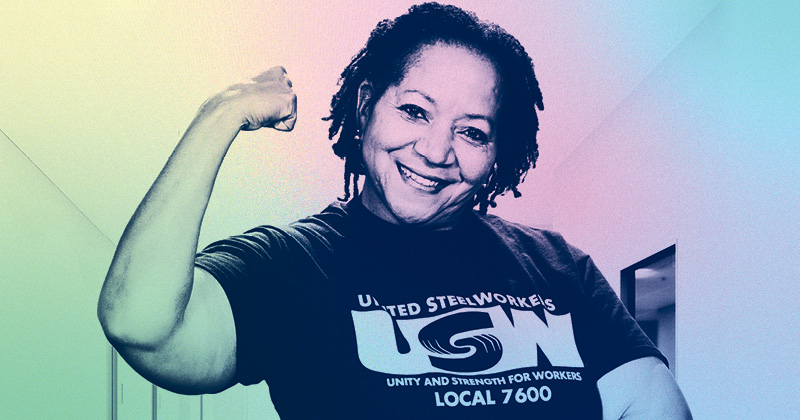
State-Level Efforts
In Michigan, where union workers have spent years fighting for minimum staffing ratios, 42 percent of nurses recently reported knowing of patients who died because of short-staffing. In 2020, nurses at a Detroit hospital filed a lawsuit claiming they were illegally fired for pointing out that short-staffing contributed to dozens of unnecessary deaths in the emergency department.
A safe staffing bill failed to pass Michigan’s Republican-controlled legislature last session. But Jackie Anklam, president of USW Local 9899, said that she hopes the new Democratic majorities that took office in both legislative bodies this January will enact minimum ratios for nurses and other groups of health care workers.
“It should be for all,” said Anklam, whose local represents hundreds of workers at Ascension St. Mary’s Hospital in Saginaw.
‘They Just Want Help’
Chris Sova, a registered nurse and president of USW Local 15301, said safe staffing standards would help to address the stress that workers feel as they race to answer one call after another.
“It’s like the water dripping in the middle of the night,” said Sova, whose local represents workers at Bay County Medical Care Facility in Essexville, Mich. “It’s just one of the many things wearing on you.”
Sova said that while many health care workers receive extra pay when they are short-staffed, they would rather have the peace of mind of knowing that there are enough people to do the job.
“They just want more help,” Sova said.
Nationwide Trend
While the pandemic fueled a renewed interest in flexing union muscle among workers across all U.S. workplaces, health care workers – in the USW, in other unions, and in non-union workplaces – were among the most active in turning that power into action.
At UMass Memorial Health Care in Massachusetts, 2,700 workers won significant raises and other enhancements in their most recent contract. Nurses at three Steward Health Care hospitals in Florida recently fought for protections from unsafe staffing as well as for the creation of an infectious disease task force.
Workers at Kaleida Health in New York fought to gain wages increases, a health and safety committee and a promise from management to create 500 new positions to address staffing issues.
And more than 800 interns, residents and other doctors at the University of Illinois Chicago formed a union last year so they could fight together for much-needed resources.
While only about 17 percent of nurses, and only about 12 percent of other health care workers, are currently unionized, a recent AFL-CIO study found that more than 70 percent of health care workers would vote to unionize their workplaces if they had the chance.
“I do see a new trend,” said Scott Skotarczyk, president of Local 7798-1 at Copper Country Mental Health in Michigan.
To Danella, that trend is bound to move the nation’s health care system forward, if workers continue to fight together for the improvements they need.
“There is strength in numbers,” she said. “And we can move the industry forward if we all work together.”
Stout agreed, offering this advice to health care workers who want to build union power at their workplaces: “Don’t give up. Don’t back down. We’re so much stronger together.”
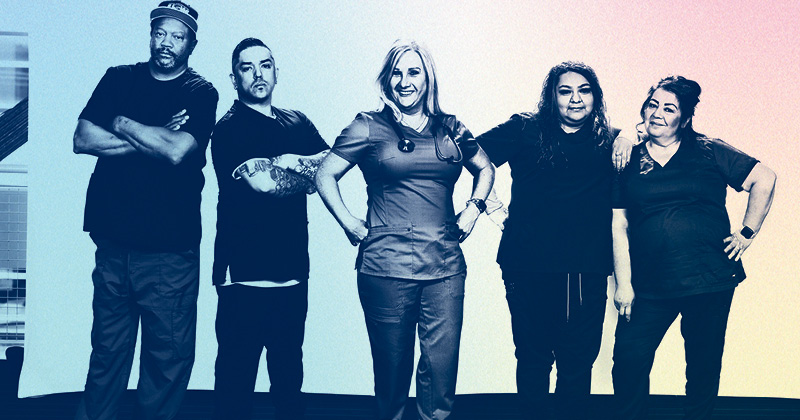
By clicking Sign Up you're confirming that you agree with our Terms and Conditions.
Recent News Articles
Want to Learn More?
See how the USW is making a real difference in our communities and our workplaces.
